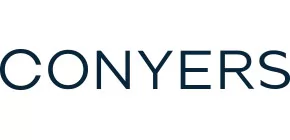Bermuda is the world's largest captive domicile with over 700 active captive licences on its register generating approximately US$54 billion in annual gross written premiums. Having formed the first modern captive in 1962, Bermuda still maintains its global lead. The jurisdiction has earned international credibility as a leading global insurance and reinsurance market over the past 40 years and is among the world's top three insurance and reinsurance markets, along with London and New York. Captive insurers represent approximately 64 per cent of the Bermuda Monetary Authority's register of licensed insurers.
Why Bermuda?
Bermuda provides ideal economic, political and infrastructure conditions to support the development of its captive industry and has the benefit of being a 'one-stop shop'. Three generations of service providers, ranging from captive managers to attorneys and accountants, have gained unparalleled experience supporting the insurance industry on the island. And with so many commercial insurance writers in Bermuda, a captive owner can come to Bermuda to hold meetings with both their captive manager and their reinsurer in the same geographical location.
The widely-respected Bermuda Monetary Authority (BMA) acts as gatekeeper to Bermuda's insurance and reinsurance markets. Every application to incorporate and license a captive insurance company undergoes a thorough review.
The BMA's 'proportionality' approach ensures firm but sensible regulation to international standards in regulating captive insurers. This risk-based regulatory approach recognises, among other things, the more limited risks that captive insurers pose. The BMA does not apply a Solvency II-type regime to captives and therefore the supervisory regime for captives is less onerous than that applicable to commercial insurers. Bermuda was officially granted Solvency II third-country equivalency as of 24 March 2016 by the European Union.
Corporate Structure
The BMA operates a three-tiered captive insurance classification system. Class 1 captives are single-parent companies writing only the exposures of their parents or affiliates. Class 2 captives are single-parent or multi-owned/held companies that have the ability to write unrelated risk up to 20 per cent of gross written premiums. Class 3 captives are companies which have the ability to write over 20 per cent, but less than 50 per cent, of gross written premium in unrelated risk.
Over the decades, a number of different types of captive structures has been used.
- A "pure captive" is an insurer writing only the risks of its parent and/or affiliates. In 2018, 65 per cent of the Bermuda market had this type of company structure.
- A "rent-a-captive" is an insurer where the policyholder is insured by the captive without owning, or at least without holding voting control, of the captive. The captive facility "rents" its capital, surplus, and license to the policyholder and usually provides administrative services and reinsurance, and/or is an admitted fronting company.
- An "agency captive" is an insurer organised by brokers or agencies that retain partial or predominant ownership of the captive, which they offer as a facility for coverage to their clients.
- A "group captive" is an insurer established by a group of companies with similar businesses or exposures, writing only the risks of its owners and/or affiliates.
- An "association captive" is an insurer that insures risks of the member organisations of an association. It may also insure the risks of affiliated companies of the member organisations and the risks of the association itself.
Formerly the preserve of the Fortune 500 and FTSE 100 companies, captives now provide benefits to organisations of all sizes and industries and are used to underwrite a variety of insurance lines, ideally those with relatively predictable claim rates.
Market Overview
The latest analysis of the Bermuda insurance market by the BMA, to the end of 2017, reports 723 licensed captives with total assets of over US$216 billion. Gross written premiums totalled over US$54 billion and net premiums over US$36 billion.
The major sources of the risks assumed by Bermuda captives are North America (67 per cent) and Europe (21 per cent). Just under half the Bermuda market is composed of owners from four sectors: financial institutions; shipping transport and storage; automotive, manufacturing and retail; and healthcare. Of new formations in 2017, 50 per cent were for the automotive, manufacturing and retail sector. Premium share of the Bermuda captive market is dominated by captives focused on financial institutions (46 per cent) and shipping (12 per cent).
The largest lines of property insurance underwritten by Bermuda captives are property and casualty catastrophe (43 per cent); warranty and residual value (21 per cent); property damage and business interruption (15 per cent); and marine (13 per cent). The primary casualty lines are general liability, workers' compensation and employers' liability, and motor.
Bermuda captives invest most heavily in bonds (73 per cent), of which 80 per cent are rated A or better by ratings agencies. Investment in equities is around 17 per cent.
Recent Developments
The Segregated Accounts Companies Act 2000, (the SAC Act) establishes a registration regime whereby a Bermuda company may register as a segregated accounts company, thereby establishing, operating and maintaining a company with segregated accounts.
Segregated account structures are often used in "rent-a-captive" structures. These structures allow for a variety of risk- financing solutions in which the sponsor (such as a captive manager) establishes and licenses a captive insurance company and "rents" the core capital, licence and corporate capacity of the vehicle to programme participants. The use of a segregated account can be substantially less expensive as it avoids the attendant administrative and capital costs associated with a pure captive. This structure is attractive to smaller corporations which might otherwise find establishing their own captive too expensive.
The Bermuda Government has recently introduced the Incorporated Segregated Accounts Companies Act 2017 (ISAC). ISAC structures provide a statutory and common law basis for the segregation of assets and liabilities and offer a contractual relationship between incorporated cells and with the ISAC itself. In contrast to segregated account company structures, each incorporated cell, or ISA, has a separate and distinct legal personality, which provides protection relative to creditors, particularly those domiciled in jurisdictions where the concept of segregated accounts is not yet recognised. Given that each ISA is a company within the meaning of the Companies Act 1981, and therefore has separate legal personality at the ISA level, it is anticipated that it will be easier to obtain a credit rating for the structure, which is attractive for some Bermuda captives. The ISAC is scheduled to be tabled before the Bermuda House of Assembly in the present parliamentary session.
Another interesting development has been the introduction of legislation designed to promote innovation in the sector. Recent changes to the Insurance Act 1978 have established a regulatory testing environment or 'sandbox' where innovators may obtain restricted licences allowing them to test new technologies and products. This allows new products, services or delivery mechanisms to be scrutinised by the BMA before being licensed as fully operational. The hope is that this will attract new fintech focused start-ups to Bermuda.
On the regulatory front, Bermuda, like other major offshore jurisdictions, has introduced an Economic Substance Act and Economic Substance Regulations, operative from 31 December 2018, to address European Union concerns with respect to offshore structures attracting profits without any real economic activity in the jurisdiction. However, it is recognised that the insurance industry is already subject to substance requirements in Bermuda by virtue of the sector's existing regulatory requirements. To the extent that a captive company is carrying on insurance as a 'relevant activity' under the Act, it will be deemed to meet economic substance requirements in respect of that activity through compliance with existing insurance regulations. Such companies will have to file an annual economic substance declaration, but by confirming compliance with their respective regulatory requirements, completion of that declaration should be fairly straightforward.
Future Opportunities
The Bermuda Government has actively nurtured its captive market for more than 50 years and remains responsive to changes in the insurance market and to new ideas and techniques in both insurance and the broader commercial circles.
Growing prosperity in Latin America, China and the Middle East, and heightened interest in the insurtech space, offers the Bermuda captive market new sources and fresh markets. Together with Bermuda's world-class service providers and a knowledgeable and highly-regarded regulator, this means Bermuda is well placed to continue to maintain its status as the domicile of choice for captive insurance business.
Originally published by IFC Economic Report.
The content of this article is intended to provide a general guide to the subject matter. Specialist advice should be sought about your specific circumstances.

